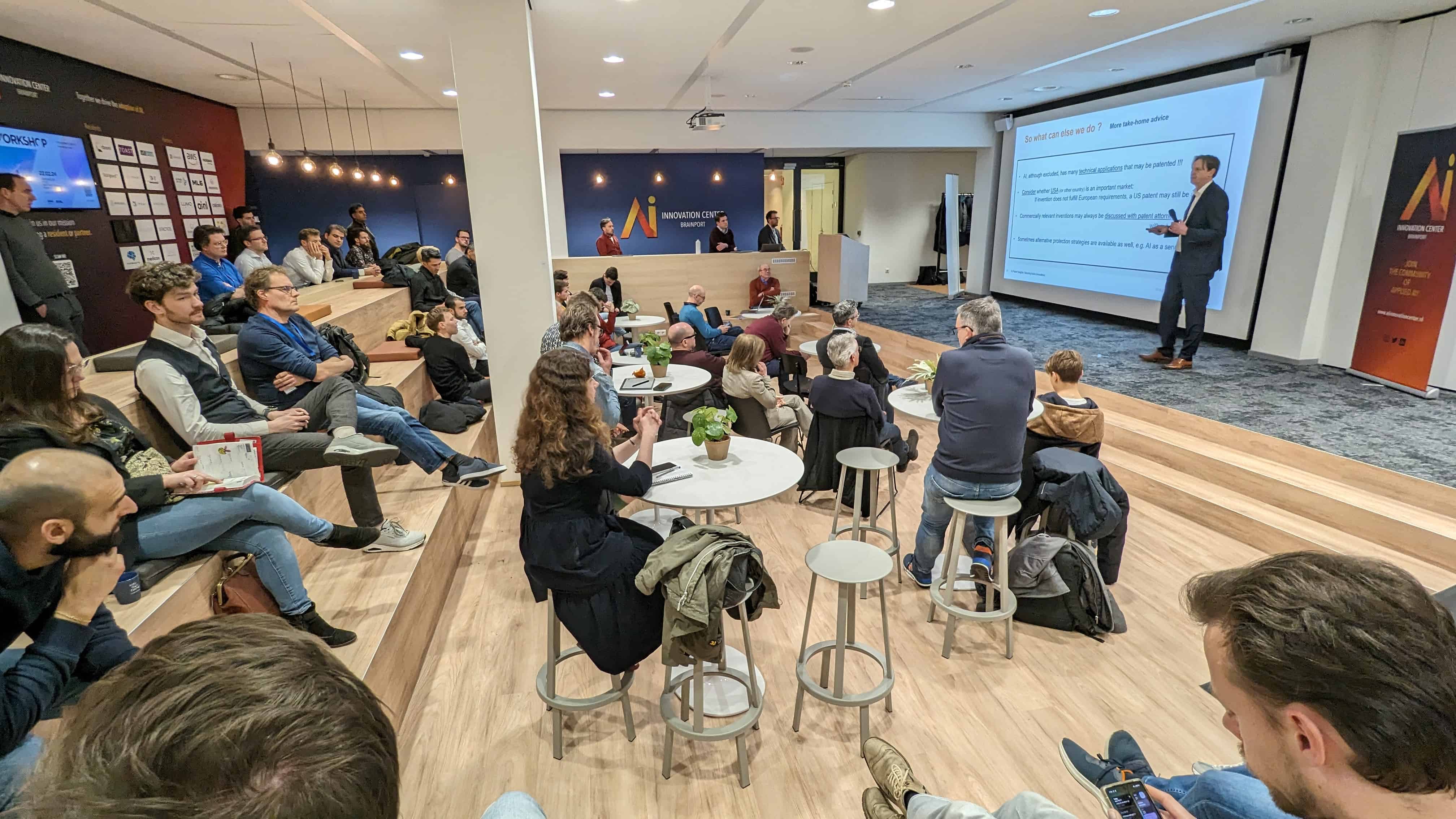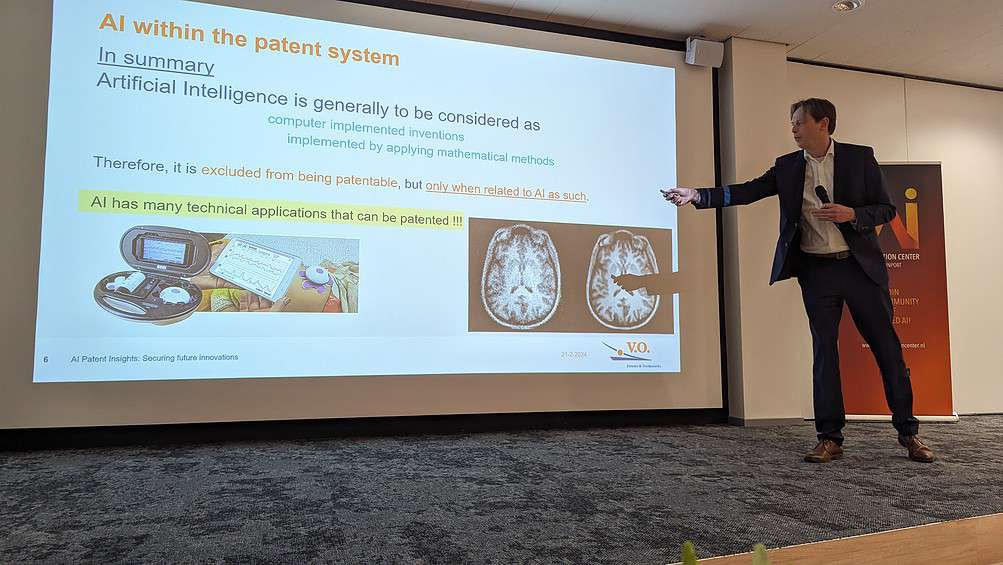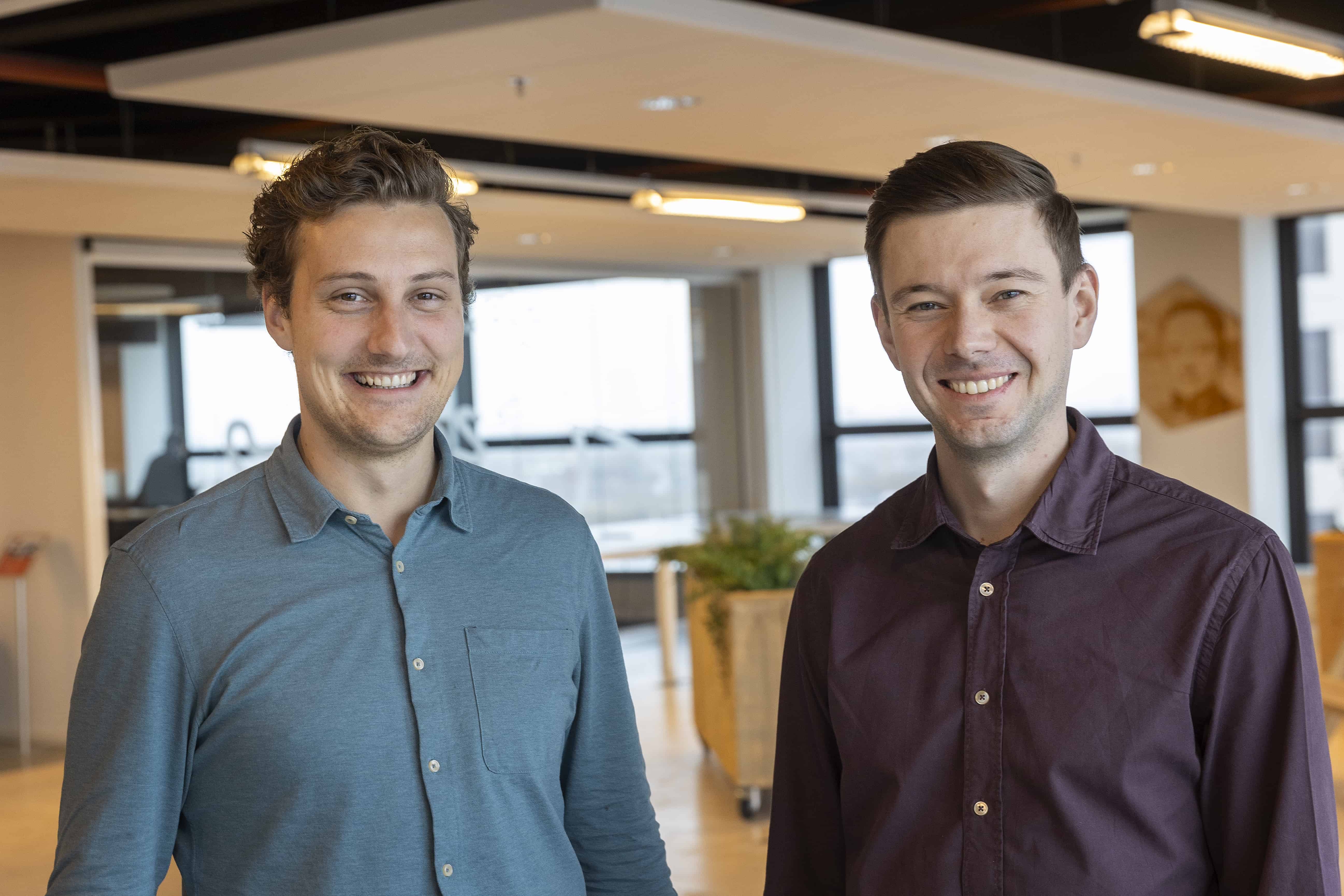
It was a full house for AI Patent Insights: Securing Future Innovations at the AI Innovation Center this week. Bart Jan Niestadt from V.O. Patents & Trademarks and Twan Uijttewaal from Netherlands Enterprise Agency (RVO) came together for a knowledge session on intellectual property with a special emphasis on AI. Yesterday, we dove into Twan Uijttewaal’s talk. Today, we focus on Bart Jan Niestadt’s.
Why is this relevant?
For start-ups, intellectual property rights are not usually a top priority. Yet, it can be rewarding to think about them carefully, especially when operating in the field of artificial intelligence. Bart Jan Niestadt from V.O. Patents & Trademarks explains why.
When does an abstract concept become a technical advancement? That question was at the heart of Bart Jan Niestadt’s exploration of artificial intelligence (AI) and its intersection with patent law. With his audience, he delved into the complexities of patenting AI-related inventions. It was all about differentiating what constitutes a patentable invention, especially in the realm of AI, which often straddles the fine line between technical advancements and abstract concepts.
Niestadt begins by addressing the fundamental question of what defines an invention in the legal landscape, highlighting the European Patent Convention’s approach. The convention refrains from offering a definitive description of an invention, instead providing guidelines emphasizing the necessity for technical novelty, inventiveness, and industrial applicability. This framework sets the stage for a nuanced discussion on the patentability of AI innovations, which frequently encounter the challenge of fitting into the technical category due to their inherent reliance on mathematical methods and computer programs. “So first of all, it needs to be new, inventive, industrially applicable”, Niestadt says. “But they have several exceptions. The most important ones for us today are the mathematical methods and the computer programs, because that’s where artificial intelligence also fits in.”

Crucial for AI
The speech illuminates a pivotal aspect of AI-related patents: the distinction between abstract concepts and their technical applications. Niestadt underscores a critical insight – while groundbreaking discoveries in fields such as mathematics or natural phenomena are not patentable, their application in solving technical problems or creating innovative tools can be. This principle is crucial for AI, where the application of machine learning models in technical fields transforms them from non-patentable abstract ideas into potentially patentable inventions.
For clarification, Niestadt takes one of the exceptions, the discovery of natural phenomena. “If you are a brilliant researcher doing research in university on gravity and come up with some groundbreaking discovery, which is very important to the scientific world, you cannot patent it. Because what you have shown is a discovery that is already part of nature and our existence. It’s not an invention. However, if you find a way of putting that to technical use, for example, if you create a new aircraft that is based on that principle, then suddenly you have an invention because that’s a technical application of your discovery. And you can find a patent application for that. This is how it works with every one of these exceptions.”

So, the trick is to define that correctly and clearly to convince the patent office that you have a technical application for your invention. Niestadt references the European Patent Office’s guidelines, which categorize AI inventions under computer-implemented inventions. These guidelines delineate that while machine learning models are abstract in nature, their application in technical fields, such as image processing or signal processing, renders them patentable. This distinction is vital for innovators seeking to navigate the intricate landscape of AI patents.

Examples
Through real-world examples, Niestadt brings to light the practical aspects of patenting AI technologies. He discusses patented innovations like an agricultural system utilizing drones and AI for environmental monitoring, highlighting the technical nature of such applications. Conversely, he presents a case of a rejected patent application for a method determining cardiac output using AI, pinpointed to the insufficient disclosure of the training method for the neural network, emphasizing the importance of detailed technical descriptions in patent applications.
Niestadt’s exploration culminates in a crucial message for innovators in the AI space: the path to patentability hinges on demonstrating the technical application of AI models and the resolution of technical problems. This approach aligns with the legal requirements for patents and ensures that AI innovations contribute tangibly to technological progress. As AI continues to evolve and integrate into various sectors, understanding and navigating the patent system becomes essential for protecting and fostering innovation in this dynamic field.
Other practices in the U.S.
For innovators who want to explore non-European markets, Niestadt has another piece of advice: “Rules may differ from country to country. You may consider filing in the U.S. if you have something that’s not patentable, and the U.S. is often commercially relevant enough to have at least some protection if possible. In Europe, inventions that are clearly not considered technical may be assessed differently in the U.S. For example, just classifying text based on content is not patentable in Europe. If I read that, I automatically think about ChatGPT. We’ve noticed that OpenAI, indeed, does not have any patents. But they do have a handful of patents and applications in the U.S. Patentability of these kinds of things over there is just a little bit different than in Europe.”
Part 1 in this short series was published yesterday. Read it here.







